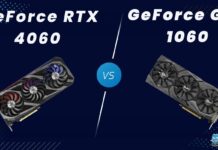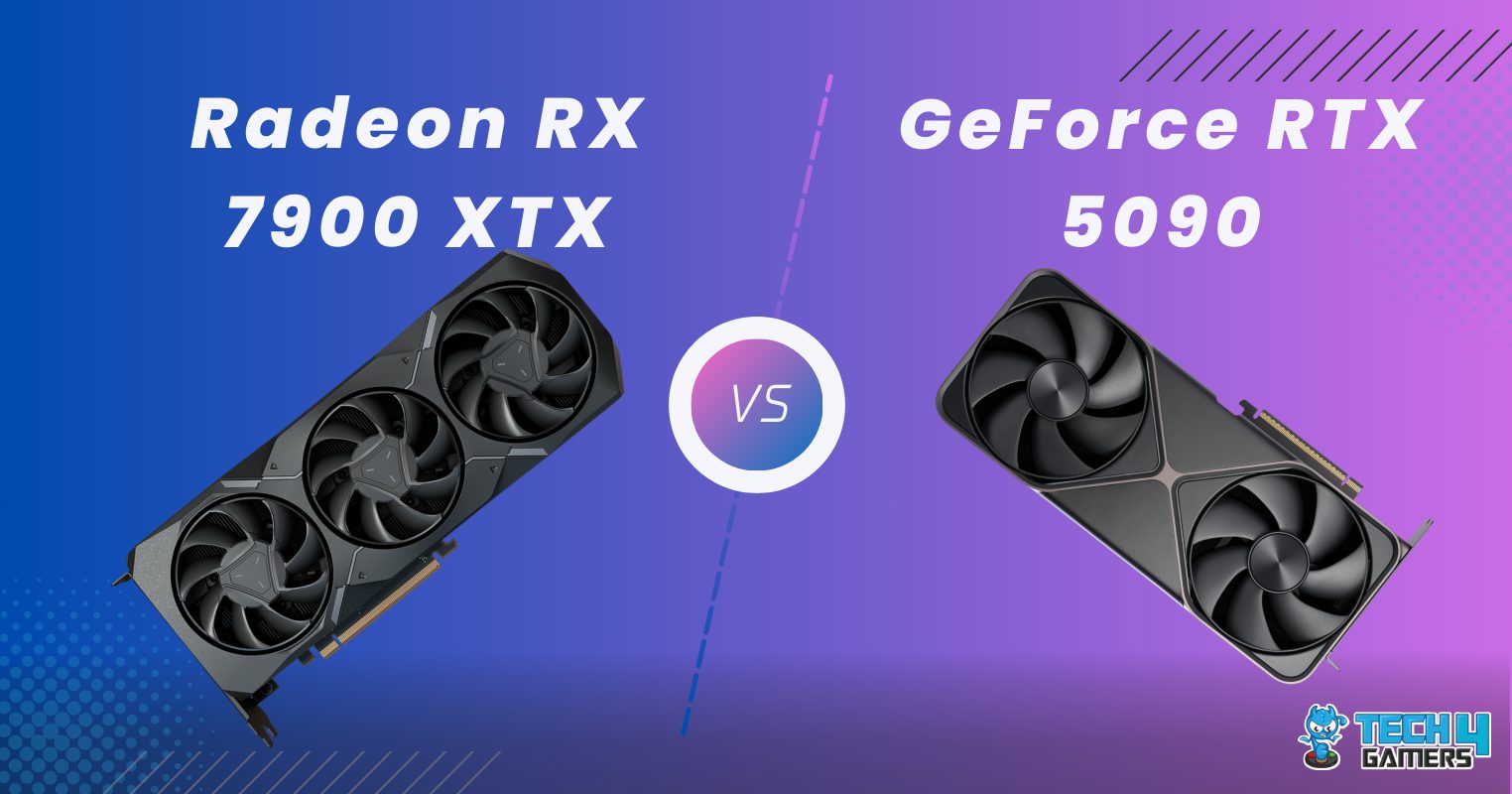Despite the different names, the successor of the 1135G7 (and 1135U, for that matter) is the Core i5 1235U packaged in Intel’s newer Alder Lake architecture. It has a few key differences from its predecessor, including a smaller TDP. In this comparison of the Core i5 1235U vs Core i5 1135G7, we will measure the difference in the performance of these chips and discuss the key differences from the architectural point of view.
Key Takeaways
- In our thorough analysis of productivity and synthetic benchmarks, the i5 1235U showcased an approximately 25% performance improvement over the 1135G7. This performance differential could impact real-world task execution for users seeking enhanced efficiency.
- Our power consumption stress test revealed that the i5 1235U consumed approximately 23% more power compared to the 1135G7. This information is crucial for users concerned about power efficiency and thermal management, especially in laptops and portable devices.
- Notably, the i5 1235U’s release is about a year more recent than the 1135G7. This temporal distinction could indicate advancements in architecture and technology integration, potentially influencing factors like performance, power efficiency, and compatibility with newer software and features.
Comparison Table
| CPU | Intel Core i5 1235U | Intel Core i5 1135G7 |
| Core Architecture | Intel Alder Lake-U | Intel Tiger Lake-UP3 |
| Processing Node | 10nm | 10nm |
| Number of Cores | 4 | 2 Performance 8 Efficiency |
| Number of Threads | 8 | 12 |
| L3 Cache | 9.5MB | 5MB |
| Base Clock Speed | 0.90GHz | 2.40GHz |
| Boost Clock Speed | 4.40GHz | 4.20GHz |
| TDP | 15W | 28W |
| Integrated Graphics | Intel Iris Xe Graphics G7 80EUs | Intel Iris Xe Graphics G7 80EUs |
Architectural Differences
- Core Count: The 1135G7 uses Intel’s older architectural philosophy, whereas the 1235U uses Intel’s newer big.LITTLE-inspired hybrid core architecture. This means the 1135G7 contains only 4 performance cores and 8 threads, whereas the 1235U has 2 performance cores and 8 efficiency cores, which total 12 threads.
- Frequency: The newer processor clocks lower than its predecessor at the base and outperforms it when it boosts. For exact numbers, the 1235U has a base clock of only 900MHz, whereas it boosts to up to 4.4GHz. The 1135G7, however, has a base clock of 2.4GHz, whereas it boosts up to 4.2GHz.
- Thermal Design Power: The Alder Lake processor has a TDP of only 15 watts, whereas the Tiger Lake processor has a TDP of about 28 watts.
- Processing Nodes: Both the 1135G7 and 1235U are based on the same lithography that is made up of 10nm processing nodes.
- L3 Cache: The 1235U almost doubles the amount of L3 cache from the 1135G7, having 9.5MB compared to 5MB on the 11th-gen processor.
Core i5 1235U Vs Core i5 1135G7: Performance Benchmarks
Having glanced over the architectural differences between the 1235U and the 1135G7, we will now measure the performance of these processors in popular synthetic and productivity benchmarks. Do note that the benchmark scores you’ll see here are a median measurement of various laptops utilizing these processors, so there might be differences in the outputs you see in the machine you go for.
Cinebench R23
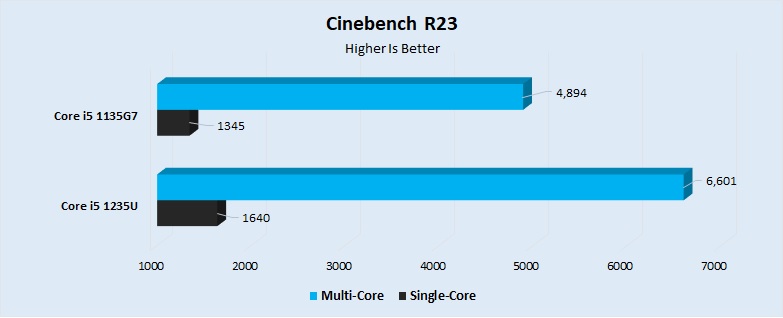
- Starting our comparison with synthetic benchmarks, the 12th gen i5 showed its superiority in Cinebench. The single-core score of this processor triumphed over the 1135G7 by 22%. Measurements for this test on the 1235U read 1640 points, whereas the 1135G7 was quite a bit behind, scoring 1345 points.
- Switching gears to the multi-core performance, the performance difference between these two processors grew. The i5 1235U had a performance of 6601 points thanks to its large number of cores, performance or otherwise, whereas the 1135G7 again left behind with a score of 4894 points.
Geekbench 5.4
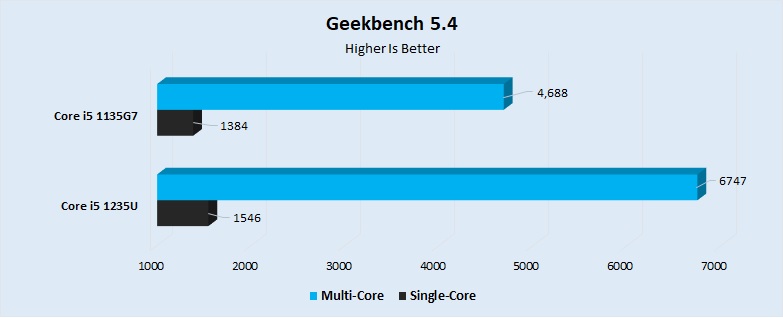
- Coming over to Geekbench, it showed a smaller difference in the single-core performance between these two processors of about 12% in favor of the 1235U. The Alder Lake processor had a performance of 1546 points, whereas the 1135G7 had a lower score of around 1384 points.
- Coming to the multi-core performance, the 1235U continued to shadow the older process, this time by about 44%. The 12th gen processor had a score of 6747, whereas the Tiger Lake processor for a score of 4688 points.
3DMark 11
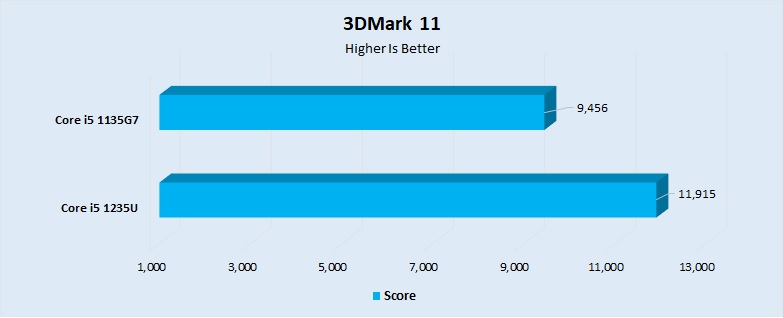
- 3DMark 11 also saw a 26% improvement when we went ahead with a generation in processors.
- The i5 1135G7 scored about 9456 points, whereas the 1235U broke the ten thousand barrier with a score of 11915 points.
Blender

- In the Classroom render, we saw a 33% improvement when switching from the 1135G7 to the 1235U. The older processor finished the benchmark in 1254 seconds, whereas the newer i5 did it in about 846 seconds.
- The BMW render also saw a sizeable 35% improvement between the two processors, favoring the 1235U. It had a render time of 423 seconds, whereas the 1135G7 rendered the scene in about 649 seconds.
FP32
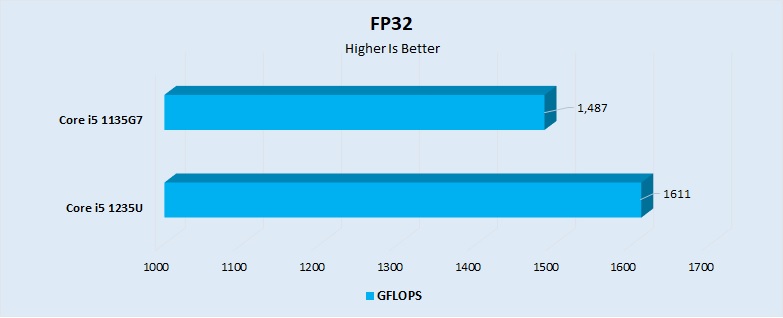
- The 1135G7 scored its first victory in FP32 with a lead of about 8%, proving it has a better GPU than its successor.
- The 1135G7 had a performance of about 1611 GFLOPS, whereas the 1235U had a performance of about 1487 GFLOPS.
7-Zip
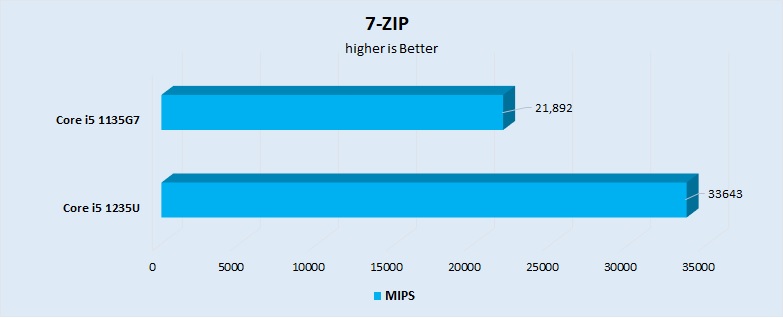
- The multithreaded 7-Zip benchmark also ran unsurprisingly better on the newer processor by a margin of about 47%.
- The 1235U had a performance of 33643 MIPS, whereas the 1135G7 was very significantly behind with a performance of about 21892 MIPS.
HWBOT x265
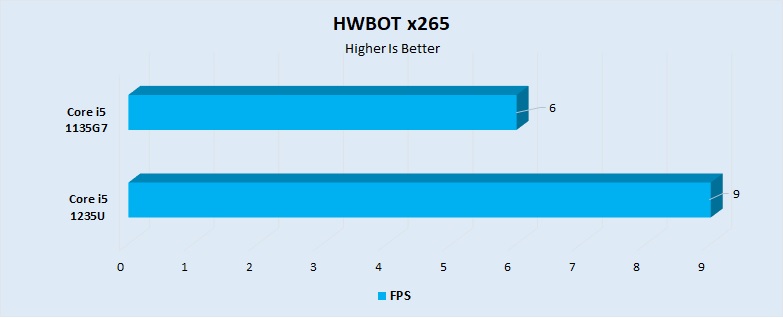
- HWBOT also had a 50% lead on the 1235U at the 4k preset, despite the 1135G7 having a better iGPU.
- The 1135G7 had a performance of about 6 FPS, whereas the 1235U had a performance of 9 FPS.
Power Consumption
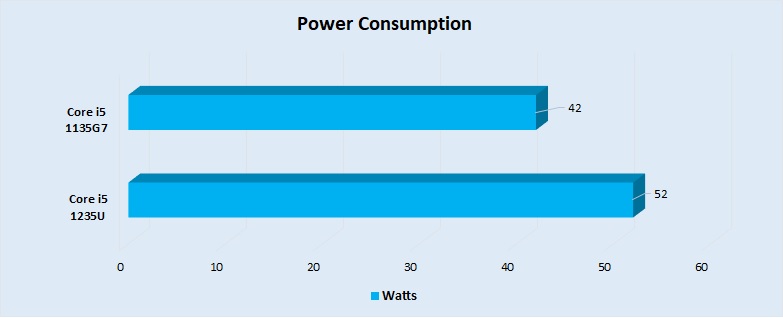
- Though the processor has a lower TDP, the 1235U drew 23% more power from the wall than the 1135G7 in our proprietary power test.
- The 12th-gen processor had a power consumption of 52 watts compared to the 42 watts on the 1135G7.
Which One Should You Go For?
Now that we have an idea of the performance of both processors in synthetic and productivity benchmarks, this section of the Core i5 1235U vs Core i5 1135G7 will guide you on the best processor for your computing needs.
- The 1235U is 25% faster than its previous model due to its more robust hardware.
- The 1235U consumes more energy compared to the 1135G7, which could potentially affect its battery life.
- The 1135G7 is considerably cheaper than the 1235U and comes with a stronger iGPU, making it a viable choice for those on a tight budget.
Pros And Cons
| CPU | Pros | Cons |
|---|---|---|
| Core i5 1235U |
|
|
| Core i5 1135G7 |
|
|
Frequently Asked Questions
The G7 at the end of the 1135G7 means that it has the highest graphics level available for the 11th gen mobile chips.
The 1235U has to share a lower power budget with its GPU, which is why it is clocked lower, leading to lower performance.
Yes, the 1235U has a BGA1744 socket rather than the BGA1449 socket found on the 1135G7.
Thank you! Please share your positive feedback. 🔋
How could we improve this post? Please Help us. 😔
Feedback By:
[Comparisons Expert]
Abdemanaf is a skilled creative writer who has been honing his craft since 2011. While initially working in different fields, he found a passion for technology and has been exploring the tech world since early 2015. Over the years, he has developed an in-depth knowledge of the latest tech trends and product offerings by various companies.
Abdemanaf’s writing reflects his analytical mindset and ability to think critically. He has a knack for breaking down complex technical information into easily digestible pieces, making his articles engaging and accessible to readers from all backgrounds. In February 2022, he joined Tech4Gamers as a blog and product comparison writer, where he has been able to hone his skills further.
As a writer, Abdemanaf is dedicated to staying up-to-date with the latest technological advancements and trends, enabling him to provide readers with the most relevant and accurate information. He is always eager to learn more and is constantly seeking new challenges to improve his skills.
Get In Touch: manaf@tech4gamers.com


 Threads
Threads
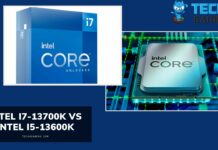
![Core i5-13600k Vs i5-12600K [We Tested 7 Games] Intel Core i5 13600k vs Intel Core i5 12600k](https://tech4gamers.com/wp-content/uploads/2022/11/Intel-Core-i5-13600k-vs-Intel-Core-i5-12600k-218x150.jpg)
